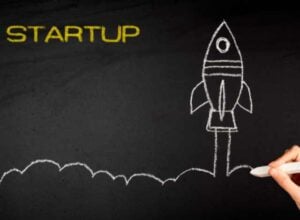Deadline: 2 October 2025
Submissions are now open for the topic “Innovative Advanced Materials for conformable, flexible or stretchable electronics”.
Scope
- The concept of “ubiquitous electronics” can be a unique opportunity for the EU, opening up new avenues for e.g., wearable electronics, e-textile, e-skin, wellbeing solutions and Internet of wearable things (IoWT), which represent strategic markets for the EU. Innovative and advanced materials (IAMs) can enable new technologies and the much-needed paradigm of an electronic device that can adapt to any substrate. Despite the progress made in this field, current devices are made up of a limited proportion of flexible, conformable, and stretchable components, mainly sensors, while the rest of the circuit remains rigid, limiting this technology shift.
- The overall objective is to discover Innovative Advanced Materials (IAMs), including 2DMs, with improved properties in terms of flexibility, conformability and stretchability that can enable novel flexible electronic applications, with a focus on environmentally friendly technologies with reduced carbon footprint processing. Proposals should address most of the following challenges:
- Discomfort of existing wearables leading to non-adoption
- Environmental impact of current electronics due to the use of hazardous and/or critical raw materials, energy-hungry and resources intensive processes
- Low or limited performance and durability of existing materials for high performance and reliable flexible electronic devices and circuits
- Limited integrability of current electronics: size and/or weight, complex cabling, interface between flexible and rigid components, design limitations (i.e., pattern geometry, thickness, dimensions).
- Proposals should address reparability and/or recyclability of devices and circuits e.g. reversible adhesives and interconnects, low temperature soldering, bio-based or recycled substrates such as low thermal budget paper and inks, bio-resorbable conductive materials for the next generation of transient implanted medical devices, etc., compatibility with energy and resource efficient manufacturing processes e.g., printing, thermoforming, high pressure forming, lamination, injection moulding, etc.
- Where relevant, proposers are encouraged to take advantage of and connecting to European analytical research infrastructures and services such as the ones in the ARIE network.
- Proposals should also consider building their innovations on top of relevant existing standards and consider standardisation as part of innovation and dissemination activities.
Funding Information
- Budget (EUR) – Year 2025: 15 000 000
- Contributions: around 5000000
Expected Outcomes
- Project results are expected to contribute to the following expected outcomes:
- Conformable, flexible or stretchable electronic devices and circuits, enabling improved user experience and adoption;
- Sustainable electronics based on low environmental impact materials, promoting reparability and/or recyclability and compatible with energy and resource efficient manufacturing processes;
- Materials tailored for solution-processed electronics such as semiconductor, conductive, dielectric, electroactive polymers, low environmental impact and/or functional substrates, etc. enabling high performance and reliable flexible electronics devices.
Eligibility Criteria
- Entities eligible to participate:
- Any legal entity, regardless of its place of establishment, including legal entities from nonassociated third countries or international organisations (including international European research organisations) is eligible to participate (whether it is eligible for funding or not), provided that the conditions laid down in the Horizon Europe Regulation have been met, along with any other conditions laid down in the specific call/topic.
- A ‘legal entity’ means any natural or legal person created and recognised as such under national law, EU law or international law, which has legal personality and which may, acting in its own name, exercise rights and be subject to obligations, or an entity without legal personality.
- To become a beneficiary, legal entities must be eligible for funding.
- To be eligible for funding, applicants must be established in one of the following countries:
- the Member States of the European Union, including their outermost regions:
- Austria, Belgium, Bulgaria, Croatia, Cyprus, Czechia, Denmark, Estonia, Finland, France, Germany, Greece, Hungary, Ireland, Italy, Latvia, Lithuania, Luxembourg, Malta, Netherlands, Poland, Portugal, Romania, Slovakia, Slovenia, Spain, Sweden.
- the Overseas Countries and Territories (OCTs) linked to the Member States:
- Aruba (NL), Bonaire (NL), Curação (NL), French Polynesia (FR), French Southern and Antarctic Territories (FR), Greenland (DK), New Caledonia (FR), Saba (NL), Saint Barthélemy (FR), Sint Eustatius (NL), Sint Maarten (NL), St. Pierre and Miquelon (FR), Wallis and Futuna Islands (FR).
- countries associated to Horizon Europe;
- Albania, Armenia, Bosnia and Herzegovina, Canada, Faroe Islands, Georgia, Iceland, Israel, Kosovo, Moldova, Montenegro, New Zealand, North Macedonia, Norway, Serbia, Tunisia, Türkiye, Ukraine, United Kingdom.
- the Member States of the European Union, including their outermost regions:
For more information, visit EC.























